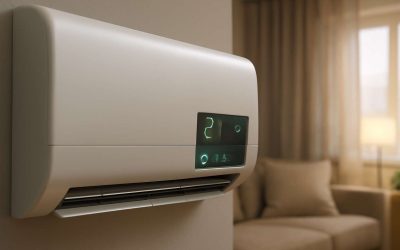
If you suffer from respiratory issues, allergies, or have a weak immune system, an air purifier can make your home a healthier place to live. These devices clean the air, removing a variety of pollutants from the environment, including pollen, dust, mold, bacteria, and smoke.
You’ll find air purifiers that are designed to treat a specific area of the home, or those that can be controlled with smart technology and connect with other home appliances. Some are even Energy Star certified, which means they use less electricity than similar models that don’t do this.
Choosing an air purifier is an investment that will pay off in the long run with improved indoor health. If you suffer from allergies, you’ll want to find one that eliminates irritants like pet dander and dust mites, as well as viruses that cause infections and illnesses.
The main filter on an air purifier consists of a HEPA (High-Efficiency Particulate Air) or HyperHEPA filter that traps fine particles, such as dust and pollen. It’s also often accompanied by a pre-filter that catches larger particles upstream before they get to the main filter.
In addition, many air purifiers come with additional filters that capture petroleum-based gases and volatile organic compounds, or VOCs. These are great for odor control in kitchens and laundry rooms.
When buying an air purifier, it’s important to consider a few things, such as the size of the room you’ll be using it in, your personal needs and whether you’re interested in controlling the unit with smart technology. You’ll also want to check the CADR ratings, which describe a device’s ability to pull out all kinds of pollutants at a given rate.
Generally, the higher the CADR rating, the better your purifier will do at removing airborne pollutants. It’s best to avoid models that don’t have these ratings because they won’t do a good job at reducing your exposure to indoor contaminants.
The right air purifier will have a smart display that will change colors to indicate your current indoor air quality. This can help you know when it’s time to replace your filters and how well your device is working.
An air purifier can be as small as a tabletop model or as large as an entire wall-mounted appliance, so it’s important to choose the right size for your home and lifestyle. Keep in mind that some of the more expensive units have larger fan speeds and are able to pull out more air than others.
You’ll also want to consider the noise level of your chosen air purifier. Some are nearly silent, while others produce a more steady hum, much like an AC unit. You can adjust the fan speed and switch to a sleep mode when you’re going to be away from your unit for long periods of time.
Lastly, look for an air purifier that has a digital display with a PM 2.5 reading and an app that gives you in-depth information about your home’s indoor air quality. These features can be especially helpful for allergy sufferers, since they’ll let you see the level of allergens in your air at a glance and be alerted to when your filters need changing.



0 Comments